Enlarge
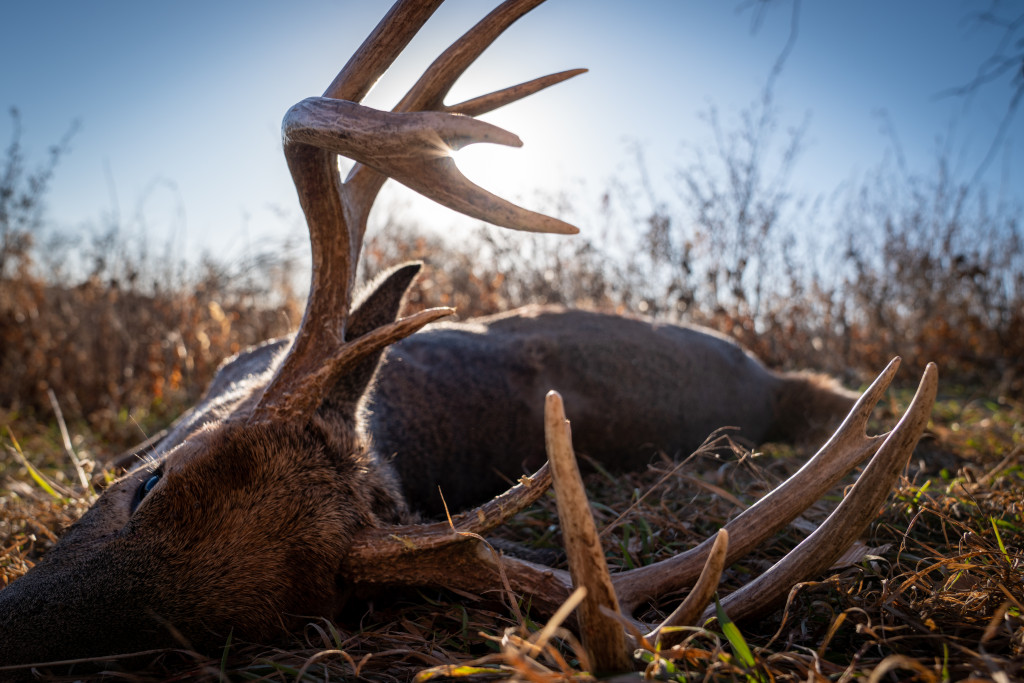
Photo by Ryan Sparks
By Ryan Sparks
I can vividly recall the two animals I’ve shot and didn’t recover. The memories still give me a gut-wrenching feeling of loss and remorse. The first loss was a Montana mule deer I tracked with a friend for several hours before falling snow made it impossible to continue. The second was a Nebraska white-tailed buck. I searched for him for three days, but never found him. He’s still the biggest buck I’ve ever seen.
There are many hunting skills that are necessary for a successful hunt, but we usually focus on the ones that are needed before the trigger is pulled or an arrow is released. Whether you’re hunting elk, antelope, mule deer or whitetail, what you do after the shot can greatly affect your chances of recovering the animal.
Analyze the Shot
The first thing to do after a shot is to mark your location. That’s easy if you are hunting from a tree stand, but not so much if you are stalking antelope or mule deer. Stick an arrow in the ground, use flagging tape, create a pile of rocks or mark the location on your GPS. This marker will provide you with a reference. Next, make a mental note of where the animal was standing. If you have your phone, take a picture of where the animal was from your shooting position.
Next, replay the shot in your mind. Ideally, you should know where you hit the animal, but with how fast modern bows are or feeling the recoil of a rifle while looking through the scope, sometimes it can be hard to tell. Additionally, shots often occur in low-light situations.

If you can’t tell where you hit the animal, think about how it reacted to the shot. If the animal hunched up, it might indicate you hit too far back, perhaps in the liver or intestines. If the animal favors a side, it could indicate you hit a leg or broke a shoulder. Usually on a perfect shot — lungs and heart — an animal runs away at full speed, not much different than if you had missed. However, a heart-shot animal will often “mule-kick,” but that isn’t always a sign of a good shot. Knowing how to read an animal’s body language could provide clues to where your bullet or arrow entered.
On a perfect shot, 30 minutes is a good amount of time to wait before tracking. Generally, a well-hit animal will die within 15 minutes, but it’s good to add extra time. Liver shots require 2-3 hours of waiting, and anything farther back, you should wait 6-12 hours. You are waiting because if left unpressured, the animal eventually will lie down in heavy cover.
If you don’t wait, at least two unfortunate things can happen. One, you can bump the animal from cover and it can run hundreds, if not thousands, of yards away on its adrenaline. Two, if not hit in the heart or lungs, the slow trickle of blood that formed a meager trail might be eliminated completely due to clotting. Both of these can prevent you from finding the animal at all later, so wait as long as you can.

Tracking
The next step is to go to the location where you shot the animal and look for sign. Inspect the ground and search for blood. If you are bowhunting, look for the arrow. If blood on the arrow or ground is gritty and dark purple or black, you probably hit the liver or intestines. If there is green material or bile, you hit too far back on the animal near the colon or stomach. Solid red blood could mean a heart or lung shot, and lighter pinkish blood that sometimes contains tiny bubbles indicates a lung shot.
Now reassess. Does what you’re seeing confirm what you thought about your shot placement? Based on this sign, decide if you should start tracking or wait. Remember, you don’t want to bump an injured animal from its bed. This definitely lowers your chance of success. The farther an animal gets from the shot site, the harder it will be to find.
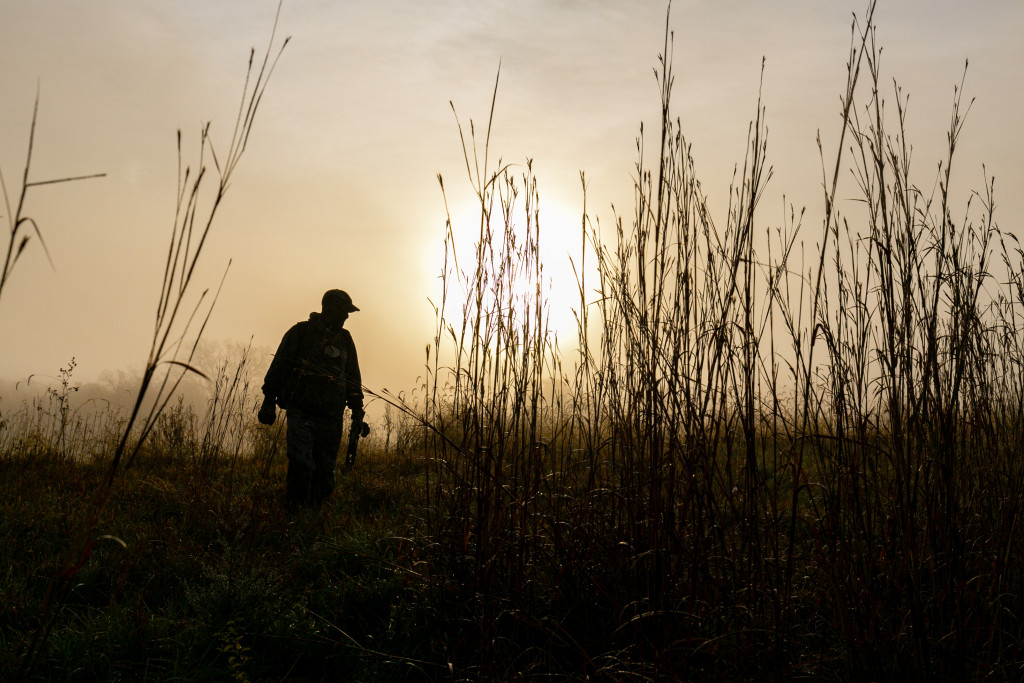
If your shot placement looked good, you waited 30 minutes and the arrow or blood at the site of impact is positive, it’s time to track. However, too many people get ahead of themselves in the anticipation of finding the animal and destroy sign along the way. Take your time. Find blood one spot at a time and go from there. Sometimes, even good shots will leave sparse blood trails. Don’t just look on the ground. Look for blood on branches, leaves, grass and brush. Think about what side you shot the animal and use that to guide your search.
Every time you find blood, mark it with flagging tape, toilet paper or by dropping a pin on your GPS. There may be times you will get off the trail and need to find your way back and
start over.
No matter where you hit the animal, there will be some sort of sign: tracks, blood, disturbed vegetation, etc. The key is to be patient and persistent. Pay close attention to the tracks of the animal. Look at the size of them and the distance apart from each other. I once tracked a buck that ran off with several does after the shot. With a meager amount of blood to follow and the tracks eventually going different directions, I figured out which way the buck went by comparing the stride distance.
Another way to track a wounded animal is to read the landscape. An animal will usually, but not always, take the path of least resistance until it reaches an area where it feels safe, such as thick cover or a bedding area. That means they will usually travel downhill, avoiding steep creek crossings or jumping fences if they can. Often, the easiest way for an animal to travel is on an existing game trail. There is an art to tracking and like anything else, you get better at it with practice.
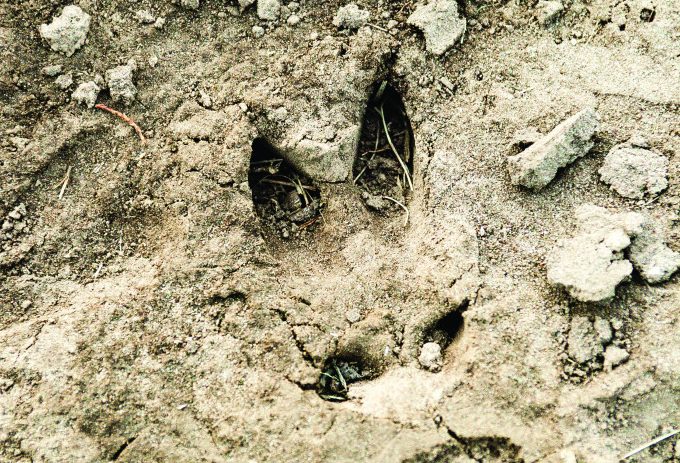
If all else fails, and you think there is a danger of spoilage, gather as many people as you can and do a grid search of the area. Ask the neighbors if you can search their property. See if there is someone in your area with a blood tracking dog. The most important thing is to do everything you can to recover the animal. Don’t give up.
The last thing to consider is when you do find the downed animal, always approach carefully, ideally with the wind in your face and from a position where the animal cannot see you. If an animal is on a steep hill, approach from below because if it is still alive and tries to flee, going uphill is much harder and will give you a better chance at a follow-up shot. Get close enough to make sure the animal has expired before you let your guard down.
Exceptions to the Rule
Everything in hunting is situational, and tracking is no different. There are several situations where you might have to disregard the wait times mentioned previously. If I make a shot in the evening, that will require tracking in the dark. I might check the forecast to make sure there is no chance of snow or rain and wait until the next morning for better light. Of course, if it’s hot or I’m hunting in an area with lots of coyotes, I stick to my regular wait times and proceed as usual in the dark.
There are also times when it’s more ethical to start tracking right away because you are losing the opportunity to find the animal, like when it’s raining or snowing. While it’s usually best to wait, there are no clear-cut rules to every situation. If you have to push a tracking job, it’s best to have two people: one person looking for sign and the hunter looking ahead for the animal and at the ready to make a follow-up shot. Treat tracking as if you are hunting — be quiet and move slowly.
Of course, the best thing you can do to guarantee the recovery of an animal is to practice your shooting, know your limitations and only take high-percentage shots. Do everything in your power to make a clean, ethical kill. Still, there are times when things go wrong. Bad shots happen. Sometimes, animals jump the string or turn suddenly just as you are pulling the trigger. Both arrows and bullets can deflect off branches. When that happens, remember these tips to increase your chances of finding game. It all comes down to the time you wait, how much effort you put into finding sign, and how you interpret what you find. ■
Ryan Sparks is a writer and photographer originally from Cass County. To see more of his work visit sparksryan.com.
From Field to Freezer
Some hunters travel less than an hour from their home to hunt, while others plan special hunts across the state for deer, antelope and elk each season. The first time I killed an animal over a day’s drive from home, the reality of the situation set in — now what? Taking care of meat in the field and getting it home in a timely manner requires advanced preparation and logistical planning. Here are the best practices for getting meat from the field to your freezer.

Field Dressing
First, consider how you will handle the animal in the field. If you shoot a deer in an open area, that might simply mean field dressing the animal and loading it into a vehicle for the drive home. However, if you are miles from the truck, hunting in steep country or in a place where 4-wheeler access isn’t allowed or feasible, dragging out an entire animal isn’t an option. In these situations, the best solution is to quarter the animal in the field and haul it out on your back.
My favorite approach to quartering an animal is called the “gutless” method. I prefer it because it cools the animal down quickly, doesn’t expose the meat to innards or hair and is easier to accomplish when you are alone. All you need is a sharp knife and a few game bags. There are many videos online that do a good job of explaining how to perform the gutless method, and the overall concept is simple: Skin the animal on one side, removing the front and hind quarters, backstrap and neck meat. As you remove each quarter, place it in a game bag and hang it, preferably in a shady spot with good air circulation.
Then flip the animal over, and using the skinned hide to protect the meat from dirt and debris, repeat the same process on the other side. In the end, you will have four quarters and a game bag containing the backstraps, tenderloins, neck meat and other trim meat. You can then open the carcass to remove the heart, liver, kidneys or anything else you’d like to keep. The process is the same, whether you’re skinning a pronghorn, whitetail, mule deer or elk. Keep in mind that in Nebraska, it is unlawful to separate a deer or antelope carcass into smaller sections than quarters before checking the animal.
Once you have the animal quartered, it’s time for the pack out. With a small antelope or deer, this can usually be accomplished in a single trip depending on the size of your backpack, but larger animals will require multiple trips. Once you have the meat back to your vehicle, you need to decide how you will get it home without spoiling. This should be a consideration long before you pull the trigger or release an arrow.
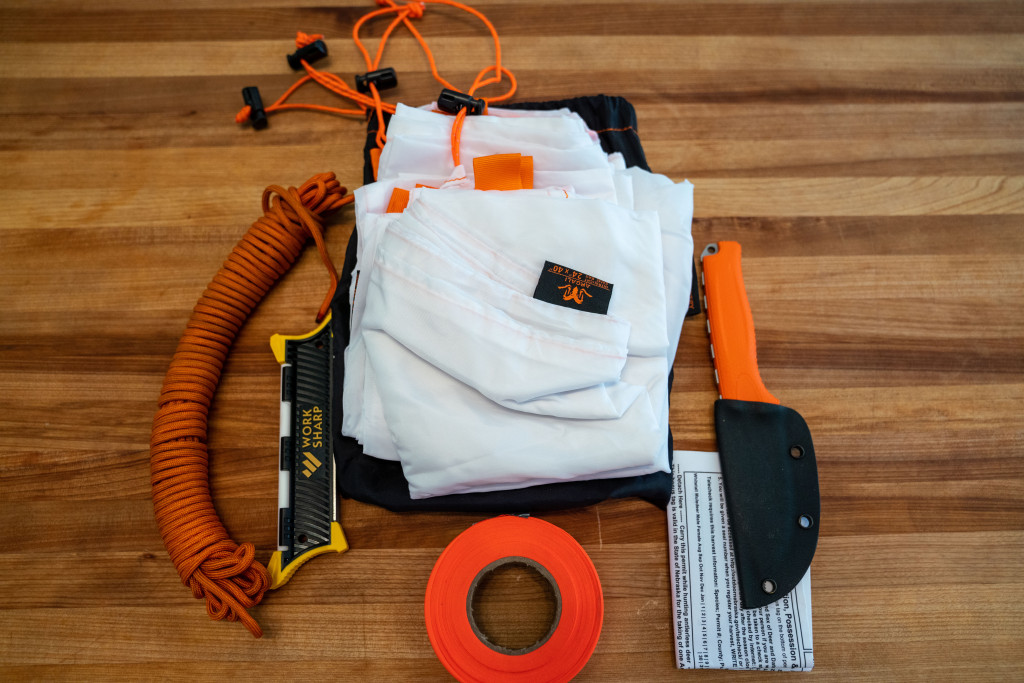
Long Trip Home
You have three options to prevent meat from spoiling on the way home: traveling with a small chest freezer, using several coolers or dropping off the animal at a processor and having them ship the meat to you. I prefer to process an animal myself to avoid the expense of overnight shipping (or making the long return drive), but if you are unprepared, a processor might be your best option.
I recommend bringing the meat home in coolers or a freezer. I’ve done both ways, and choosing one method over the other will depend on the specific situation.
If you’re looking at a multi-day trip home and have the extra space for a freezer, it’s a nice option. Small chest freezers are usually big enough to freeze entire quarters, so you don’t have to worry about processing until you get home. Just be sure to have plenty of extension cord to plug in the freezer at hotels, campgrounds or gas stations. Throwing a blanket over the freezer will add insulation and keep the sun from directly hitting the freezer.
Most often, though, I bring meat home in coolers. If you have a huge cooler that can fit an entire quartered animal, that’s great, but most people don’t have one. This space limitation means you will have to cut the meat into large muscle groups, bag it and then preferably freeze it before you take it home.
Airbnb and Vrbo are great options for processing animals because you have a full kitchen, including a fridge and freezer. On trips like these, I bring a vacuum sealer, freezer bags and a 6-inch boning knife — I worked as a butcher for 3 years, and those items are the basics. Saws and larger knives can be handy, but not necessary. I prefer cutting the meat into large muscle groups and bagging any trim separately to grind later. Freeze everything before placing meat in coolers for the journey home. If you prefer to butcher meat on your truck’s tailgate, hotel and motels generally have freezers they will allow you to use at a cost, as do meat processors.
Short Trip Home
If you are within a day’s drive of home, freezing the meat isn’t as great of a concern. In this case, dry ice is a great choice. Dry ice is readily available at grocery stores, some gas stations, as well as farm and ranch supply stores — call ahead. Place your meat in the bottom of the cooler with the dry ice on top, separated by a piece of cardboard. This will keep the dry ice from touching and damaging the meat. Anytime you use dry ice, be sure to crack the cooler or open the drain port at the bottom so pressure doesn’t build inside the cooler.
Wet ice is also an option, but it melts and will eventually soak the meat. If you use wet ice, place it on the bottom of the cooler with something above to separate it from the meat. Open the drain in the bottom of the cooler to drain melted ice water. Freezer packs also work well, and I often use frozen water bottles if I have the chance.
Know When Not to Shoot
The most common mistake in the early season is shooting an animal too far from the truck where it’s difficult to retrieve meat and cool before spoilage occurs. In this case, pulling the trigger or releasing an arrow isn’t ethical. Think about those factors before you shoot. If you are unsure, don’t take the shot.
Making the right choices in the field, knowing how to efficiently quarter and pack out game, being prepared with the necessary tools and having a game plan to get the meat home safely are the keys to enjoying game meat all year long.

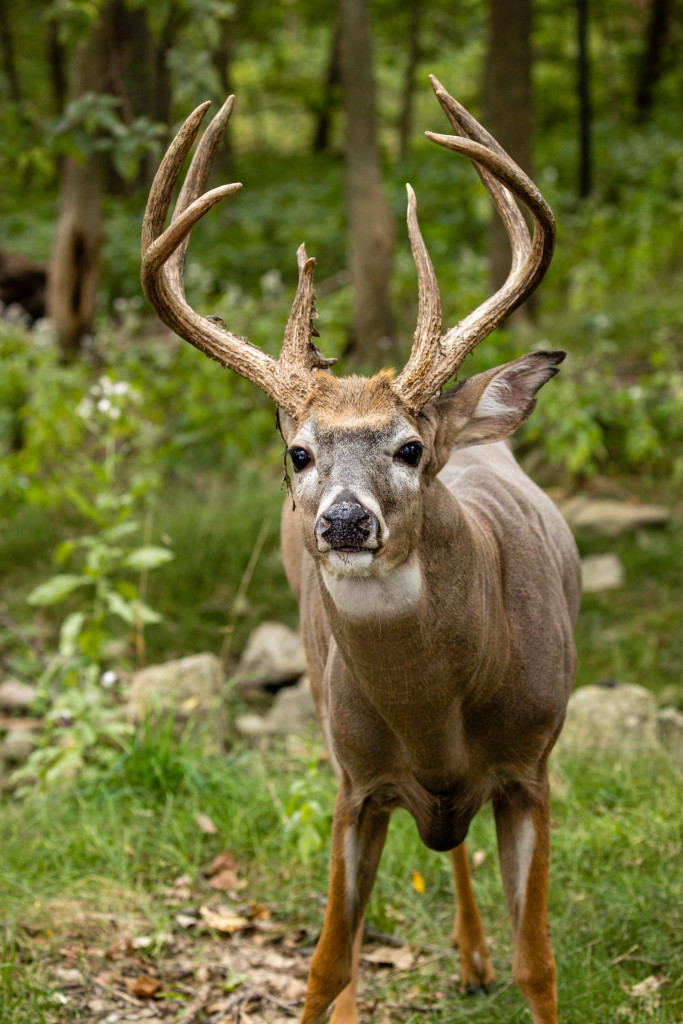
The post After the Shot appeared first on Nebraskaland Magazine.
















